What shapes Azerbaijani national identity? The answer is complex and personal, but one key element is the Azerbaijani national narrative. This includes the heroes and pivotal events taught in schools, the places central to the nation’s collective memory, and the language and beliefs that frame its worldview.
A national narrative goes beyond history: it is the people, events, places, and values that define how a nation understands itself. It lives in literature, film, and art, in monuments and place names, and in the calls to action used by leaders and activists.
This resource presents Azerbaijan’s national narrative in a concise, accessible way to help outsiders—tourists, students, and diplomats—grasp the cultural foundations of Azerbaijani society and better understand the Azerbaijani nation.
Note: Most Azerbaijanis prefer “Azerbaijani,” which is closer to how the ethnicity is referred to in Azerbaijani itself. There is a tendency in English to use “Azeri,” which was also commonly used by the Soviets, and which is a misnomer according to many Azerbaijanis. For more on this and other language issues, see our Talking Azerbaijani Phrasebook.
Religion, Language, and Ethnicity in Azerbaijan
Azerbaijan is about 95% ethnically Azerbaijani. Additionally, 97% of the population identify as Muslim.
Honor and defiance have been strongly developed in Azerbaijani culture over a long history of resisting foreign empires. Despite having been ruled by the Persian, Ottoman, and Russian Empires, and then by the Soviet Union, Azerbaijanis have preserved their cultural identity and long sought to be an independent nation-state. The spirit of the resistance paved the way for the establishment of the modern Republic of Azerbaijan.
To be Azerbaijani means carrying a culture that mixes traditions from the East and West. It also means appreciating the value of music and art, respecting elders, and being hospitable to guests.
The Azerbaijani language is a strong marker of identity for Azerbaijanis. Long influenced by Persian, Arabic, and Russian, government and grassroots groups are now working to move the language closer to its Turkic roots. The Soviet-imposed Cyrillic alphabet is being replaced with a localized Latin-based alphabet. Turkic words are promoted over loan words. Language has also helped spark pan-Turkic movements in Azerbaijan, creating affinity with states like Turkey and those in Central Asia that speak similar languages. For more on this and other language issues, see our Talking Azerbaijani Phrasebook.
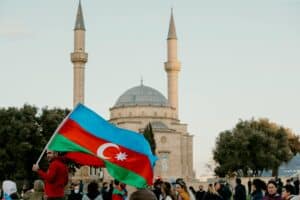
Islam is the professed faith of more than 90% of ethnic Azerbaijanis. About 65-75% are Shia and 25-35% Sunni. In some places, these two branches are rivals. However, in Azerbaijan, one of the world’s most secular Islamic societies, they peacefully coexist. Muslim identity in Azerbaijan is centered more on culture and philosophy than dogma; thus, while most Azerbaijanis do not pray five times a day, most will profess their faith as well as support charity and maintain cleanliness, for instance. Further, the Islamic crescent and the color green, often used to signify Islam, can be seen in most state symbols.
Mugham is a musical style native to Azerbaijani culture. It blends lyrics taken from or based on classical Azerbaijani literature with traditional Azerbaijani folk instrumentation in modal and improvisational compositions. Developed in the Middle Ages, and nearly lost under the Mongols, it was revived and flourished under the Safavid Empire. Today, it is often performed at events as a way of essentially marking them as Azerbaijani. Azerbaijan has dedicated schools to training new mugham musicians and founded the International Center of Mugham to study and popularize the genre globally. Artists continue its development – blending it into new styles such as operatic mugham, symphonic mugham, and mugham jazz.
Modernization has been one of the pillars of the Azerbaijani state since the founding of the original Azerbaijan Democratic Republic (ADR) in 1918. This has been understood to mean creating a secular society that supports economic and social progress. Thus, the ADR was quick to not only attract foreign investment, but to spread public education and enfranchise women. Modern Azerbaijan has concentrated on maintaining a generally European orientation, high literacy rates, low poverty rates, religious tolerance, and ambitious infrastructure projects.
Geography in Azerbaijani Culture
Geography helped form early culture in Azerbaijan in unique ways – especially in its hydrocarbon reserves which exist very near the surface, creating unique and striking geographic features.
The Gobustan Rock Art Cultural Landscape features carvings dating back 5,000-20,000 years and permanent settlements that lasted from the Upper Paleolithic to the Middle Ages. The carvings show a rich culture of dancing, hunting, and ceremonial burials. A few show longships similar to those used by the Vikings, which some argue show the region’s close engagement with Europe from a very early time. In 1996, the Azerbaijani government declared the area a protected reserve and, in 2007, UNESCO listed it as a World Heritage Site.

Mud volcanoes are rare. Some 700 exist worldwide, with 350 in Azerbaijan, where pressurized natural gas has pushed fluidized sediments up through the soil, forming, over time, a mound similar to a volcano. Although usually small, some in Azerbaijan have been active long enough to grow hundreds of feet high. In 2007, Azerbaijan created a system of national reserves to preserve and protect these mud volcanoes.
The Ateshgah Fire Temple, near Baku, was built over a naturally occurring eternal flame, fed by natural gas near the surface. There is debate over whether Zoroastrians or Hindus originally built it, but it is known that it was maintained and frequented by both religions as well as Sikhs who paid pilgrimage to its holy “unquenchable flames.” Today, it is a protected site under Azerbaijani law. A museum there describes its history and celebrates Azerbaijan as a land of religious diversity and tolerance. “Atesh” is a Persian word also used in Azerbaijani to refer to fire.
“Southern Azerbaijan,” is what Azerbaijanis often call the historically Azerbaijani areas of northern Iran. Although lacking precise borders, it usually includes the three provinces of Iran’s northern tip and sometimes stretches further south. Formed in 1813, after Russia and Persia cut the Azerbaijani homeland in half, Southern Azerbaijan contains many sites important to Azerbaijani history. Tabriz, for instance, was the original capital of the Safavid Empire, and the center of the Azerbaijani golden age. Azerbaijani foreign policy works to support the rights of their cultural and linguistic kin in Iran. The Azerbaijani state has never made territorial claims on Southern Azerbaijan, but some nationalists do. Iran, in turn, is often distrustful of Azerbaijan because of this. The Azerbaijani language has no official status in Iran although its speakers may account for up to 40% of Iran’s population. More Azerbaijanis live in Iran than Azerbaijan.
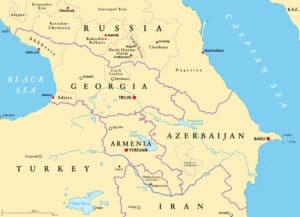
Karabakh and Nakhchivan were also previously divided from the Azerbaijani homeland. After the USSR fell, the enclave of Nakhchivan was cut off from the mainland by a new international border. Armenia then blockaded the enclave during the Karabakh Wars. Karabakh, a cultural hub that for centuries contributed to the art, literature, and music of Azerbaijan, was lost in the first of those wars. Karabakh is particularly associated with the development of mugham, a unique musical genre that in many ways helps define Azerbaijani culture and identity. These conflicts and territorial losses/separations were sources of national trauma. Karabakh’s full reclamation in 2023 was viewed as a healing of old wounds and a restoration of national dignity. Unimpeded access to Nakhchivan through Armenian territory is now a major demand from Azerbaijan in its treaty negotiations to ensure it is not separated again.
Baku is Azerbaijan’s capital and the main destination for ambitious Azerbaijani youth seeking professional opportunity. Baku’s 2.3 million residents account for over 20% of Azerbaijan’s population and produce 60-70% of its GDP. Built around a massive natural port on the resource-rich Caspian Sea, this economic, political, and cultural center has long been a regional transport hub and today rests on one of the world’s longest-developed reserves of oil and natural gas. Baku prides itself on its multiculturalism and religious tolerance, where Shia and Shiite Muslims live side by side with Christians and Jews. It also embodies Western and Eastern cultures, combining modern commercial skyscrapers and ancient mosques.
Azerbaijani Historical Heroes
The following people have played pivotal roles in Azerbaijan’s history and can be thought of as “founding fathers.” You may see monuments to them and places named for them.
Atropates founded Atropatene in the 4th century BCE. A military leader who served Darius III and then Alexander the Great, he was appointed governor of a territory that is today dominated by Azerbaijani culture. Upon Alexander’s death, he declared the land he ruled independent. Many Azerbaijanis regard this as the earliest precursor to modern Azerbaijan. Some even believe the name “Azerbaijan” is descended from “Atropatene” or perhaps “Artabazan,” who succeeded Atropates and expanded and consolidated his territories.
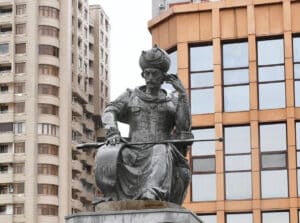
Shah Ismail Khatai founded the Safavid Empire in 1501. Khatai made Azerbaijani language and culture official and was a prolific author and contributed to the development of Azerbaijani as a literary language. His works are considered part of the classical Azerbaijani canon, reflecting the language, spirituality, and philosophical thought of his time. Khatai’s empire absorbed all culturally Azerbaijani territory, providing Azerbaijanis with a unified homeland. He also established Shia Islam as the official religion of his state and it remains the professed religion of a majority of Azerbaijanis. His strong, centralized state lasted more than 200 years. Thus, the Safavid Empire is known to Azerbaijanis as their first golden age and Shah Ismail Khatai as one of their greatest national heroes. Statues and monuments to him abound and many streets, schools, and cultural institutions are named for him.
Muhammad Fuzuli was an author who wrote mostly in the early Safavid Empire. He is considered a master of several traditional poetic forms including the ghazal, a poem that focuses on spiritual themes. His poetry is marked by a deep emotional intensity, philosophical depth, and a distinctive lyrical quality. One of his best-known works internationally is Leyli and Majnun, a tale of forbidden love taken from Azerbaijani folklore. It was adapted by Azerbaijani composer Uzayir Hajibeyov into the first Islamic opera in 1908. Fuzuli’s most important work is Divan, a collection of a few hundred poems on numerous topics that regularly appears in school curriculums and is often quoted from as a source of spiritual and philosophical knowledge. Fuzuli is revered as Azerbaijan’s national literary figure on par with Shakespeare for English speakers. His name is on monuments, street names, schools, and even an entire administrative region.
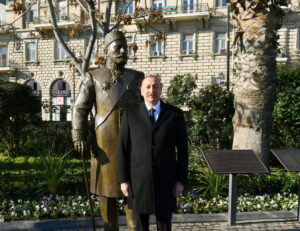
Hajji Zeynalabdin Taghiyev was an Azerbaijani philanthropist at the turn of the 20th century. Born into a rural family, he was raised largely uneducated but also deeply religious. He trained as a mason to support his family. By 18, he was working as an independent contractor. When oil was discovered around Baku, he invested in land, eventually struck oil, and became one of the wealthiest men in the Russian Empire. He continued to build a business empire while giving away massive amounts to projects like building the first Azerbaijani national theatre, the first secular Muslim school for girls in the region, and even a pipeline more than 100 miles long to solve Baku’s water crisis. He developed many individual communities with healthcare, mosques, and electricity. He gave scholarships to promising Azerbaijani artists, writers, and thinkers so that they could study in the world’s top universities. Today his name can be found everywhere in Azerbaijan, where he is celebrated for his contributions to the country’s development and modernization.
Mahammad Amin Rasulzade is known as the father of modern Azerbaijan. He worked for most of his life to achieve Azerbaijani independence, participating in the 1905 and 1917 Revolutions and spending considerable time in exile for his actions. He advocated for social democratic as well as pan-Turkic and pan-Islamist policies. As head of the Azerbaijani National Council, he declared the Azerbaijan Democratic Republic independent in 1918. Having achieved his end, he retired from politics to teach literature at Baku State University, the founding of which he helped organize with funding from philanthropist Hajji Zeynalabdin Taghiyev. When the Soviets invaded in 1920, he was forced back into exile and resumed his political struggle until his death in 1955. His legacy is somewhat complicated in that he worked at various times with the Bolsheviks, Nazis, Americans, and others in his attempts to secure an independent Azerbaijan. However, he is remembered primarily for his long fight for independence. His words when founding the Azerbaijani state in 1918, “The flag once raised shall never fall,” are still a rallying cry for many. Baku State University now carries his name.
Heydar Aliyev served from 1993 to 2003 as Azerbaijan’s third president after the collapse of the USSR. He stabilized the country during a period of severe political turmoil, economic collapse, and conflict, particularly during the First Nagorno-Karabakh War. He pushed through major constitutional and economic reforms, including bringing in massive foreign investment to the energy sector, laying the groundwork for Azerbaijan’s rapid oil-driven economic development. He fostered excellent relations with both the West and Russia, marking a major turning point in Azerbaijan’s post-soviet modernization and integration into the global economy. He died of heart complications in 2003 and is now remembered with statues, a flower festival held to coincide with his birthday each year, and multiple buildings, streets, and institutions named for him, including Baku International Airport, the country’s largest mosque, and a major new cultural center. He continues to be officially celebrated in Azerbaijan as the “National Leader” who set the course for the country to its present standing.
Historical Events
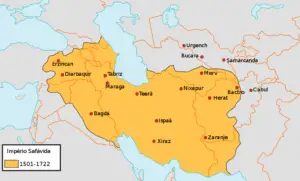
The Safavid Empire in the 16th and 17th centuries was a golden age for Azerbaijani culture. Although a Persian empire, Azerbaijani language and culture was made official in the court and actively supported by the Shah. Shia Islam was made the state religion and deeply ingrained into Azerbaijani culture. The cultural festival of Navruz, of ancient Zoroastrian origin, was also revived and supported and remains a national holiday for Azerbaijanis. Several great writers appeared under the empire, mugham music was revived, and architectural and artistic styles appeared that are still considered classically Azerbaijani today. Perhaps most importantly, the Safavids united Azerbaijanis into a single empire where they were politically and culturally empowered, giving Azerbaijanis a sense of proud nationality in a united homeland.
The Treaties of Gulistan (1813) and Turkmenchay (1828) are symbols of division and loss but also of strength in the face of adversity to Azerbaijanis. The Treaty of Gulistan gave southern Azerbaijan to Persia and the north to Russia. Turkmenchay gave Russia further territorial gains, including Nakhchivan. This established Azerbaijan’s current borders while splitting the Azerbaijani population. Russia spurred rapid economic growth by developing resources in the north, but its Russification policies helped fuel a national awakening that helped lead to the Azerbaijani Republics’ formation. Today, Azerbaijan is independent, but most ethnic Azerbaijanis live in Iran, where they are a well-integrated minority, represented at most levels of government, religion, and society, but also watched carefully for signs of nationalism. The enclave of Nakhchivan is another geographic split, separated from Azerbaijan by Armenian territory. Thus, many Azerbaijanis see their nation as a divided one and this influences current geopolitics, contributing to the conflict with Armenia as Azerbaijan demands a corridor to access Nakhchivan across Armenian lands. Further, Azerbaijan and Iran’s cross-border relationship has been historically delicate. Azerbaijanis also see this history as showing their strength and unity as, throughout these geographic divisions, they have maintained their language and culture despite separation and imperial pressures. To emphasize this, Azerbaijan has a state holiday, the International Solidarity Day of Azerbaijanis, meant to unite Azerbaijanis around the world, celebrated each December 31.
The Azerbaijan Democratic Republic (1918-1920) was formed as the Russian empire collapsed. It was the first secular democratic republic in the Muslim world. Its constitution championed democracy, equality, and civil rights. It was one of the few countries that granted women the right to vote and hold office. It founded the region’s first modern university, Baku State, in 1919 and successfully brought investment to its oil industry while rapidly gaining international recognition. However, it was weakened by ethnic tensions, a war with newly independent Armenia over disputed borders, and threats from the Ottoman Empire, Qajar Empire, and Russia. The Soviet Red Army invaded and dissolved the republic in April of 1920. Nevertheless, the short-lived Azerbaijan Democratic Republic is seen as the first truly independent, modern Azerbaijani state – and one that showed Azerbaijanis as forward and westward facing. The modern Republic of Azerbaijan, founded August 30, 1991, after declaring independence from the USSR, is seen as a continuation of this initial government. Together, they represent a dedication to self-determination and independent governance. To emphasize this continuity, the modern Republic of Azerbaijan celebrates its Independence Day on May 28th, the day the Azerbaijan Democratic Republic declared independence from the Russian Empire.
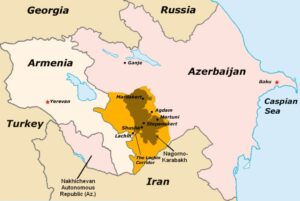
Wars with Armenia (1918-1920, 1988-1994, 2016, 2020, 2023) have largely defined Azerbaijan’s recent development. At the borderlands of various empires for most of history, the peoples of the Caucasus lived fluidly and interspersed across those mountains. Under the Russians and Soviets, nationalism grew and independent homelands were sought that incorporated as much of a people’s population and historically important lands as possible. In the case of the Armenians and Azerbaijanis, the overlap in claims was enormous. Fighting first broke out in 1918, particularly over the Nagorno-Karabakh, Nakhchivan, and Zangezur regions. The war ended in 1920 when the Soviet Red Army conquered both countries. Nakhchivan remained with Azerbaijan and Nagorno-Karabakh was made an autonomous oblast within Soviet Azerbaijan, but conflict remained. In the late 1980s, Armenia demanded to unite with Nagorno-Karabakh. Clashes began and, after Azerbaijan and Armenia declared independence from the USSR in 1991, full-scale war broke out. Under a Russia-mediated ceasefire, Armenia retained Nagorno-Karabakh and adjacent regions, but the international community did not recognize the new borders. The United Nations issued several resolutions affirming Azerbaijan’s territorial integrity and calling for Armenia to withdraw. The conflict remained frozen, occasionally igniting into skirmishes, such as the Four Day War (2016) and the Second and Third Nagorno-Karabakh Wars (2020, 2023). In the final conflict, Azerbaijan took the entire territory back and the entire Armenian population of Nagorno-Karabakh evacuated to Armenia. Peace talks are progressing to reset the borders back to nearly what they were under the Russian Empire and USSR. The long term effects of this prolonged and complicated conflict have elevated patriotism and the position of the security forces in both countries, where each has a high enlistment rate and military expenditure per capita.
Diversity in Azerbaijan
Of course, not everyone in Azerbaijan is Azerbaijani. The stories and experiences of a country’s ethnic minorities are also part of the lived experience that defines it as a state.
Lezgins, at under 2% of the population, are Azerbaijan’s largest ethnic minority. They are indigenous to the north Caucasus, traditionally Sunni Muslim, and speak Lezgian, a language related only to a few others found in the Caucasus. They straddle the border between Southern Russia and Northern Azerbaijan, with about three quarters of their total population in Russia. Much like the Azerbaijanis themselves, the Lezgins have lived much of their existence under foreign empires, yet have maintained a distinct language and culture, and now strive to maintain connections across a border that divides their homeland.
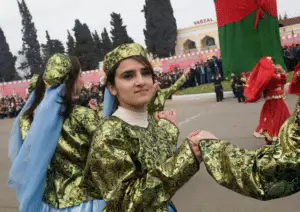
The Talysh account for about 1% of the population. They are indigenous to the land, speak a Persian language, are mostly Shia Muslims, and once held a Talysh Khanate in the area from 1747–1828. Today, their homeland is split between Azerbaijan and Iran, with perhaps 80% of the population in Iran. In Azerbaijan, they are concentrated in Lankaran, the former capital of the khanate. Lankaran is Azerbaijan’s fourth largest city (and third in GDP) and the Talysh are a majority of the population there.
Russians occupy third place with about 1% of the population. They are mostly concentrated in Baku with a history dating back to the 19th century. The Russian language is widely used in Azerbaijan, and the state education systems offers “Russian Sector” schools, where instruction is in Russian. The schools are popular and generally assumed to have a higher quality of education than “regular” schools. Russians account for about 30% of Azerbaijan’s tourists, but relatively few Russians fled to Azerbaijan following mobilization for the war in Ukraine. Azerbaijan only allows Russians stays of 90 days without a visa while Georgia, for instance, offers a year.
The Jewish community in Azerbaijan is small but dates back to likely the 5th century when a small band of Mountain Jews arrived from the Persian Empire and eventually settled near the modern Azerbaijani city of Guba. In the 19th century, Baku became a major center for Zionist thought and attracted many different Jews from across the USSR including Ashkenazi, Bukharian, Georgian, Kurdish, and Mountain Jews. Today, both Guba and Baku are known for their small but active Jewish populations and synagogues.
You’ll Also Love
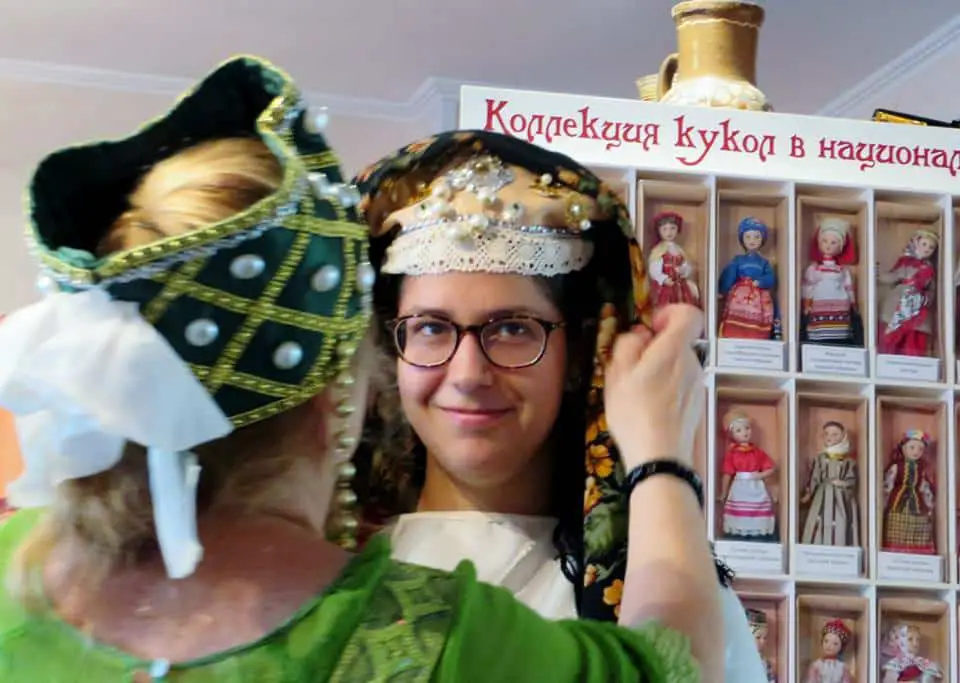
Study Abroad and the Identity of American Students of Russian
Many American students of the Russian language take part in study abroad programs in such Russian-speaking countries such as Moldova, Kazakhstan, Kyrgyzstan, Latvia, and Lithuania, to name a few. Kinginger (2009, p. 11) defines study abroad as “a temporary sojourn of pre-defined duration, undertaken for educational purposes.” After entering a new country and culture, these […]
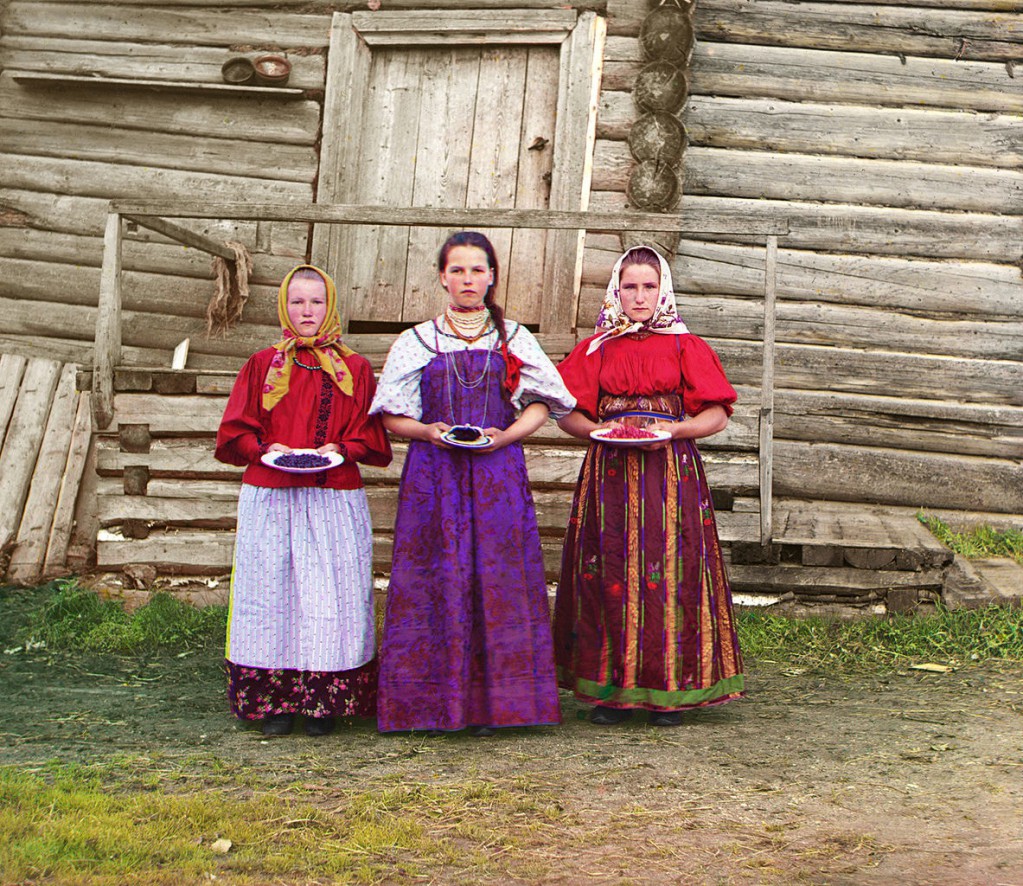
Russian MiniLesson: The Russian Soul and Related Russian Vocabulary
Many well-known people from various countries have acknowledged that Russia and the Russians have unique features that can be difficult to explain. For example, British Prime Minister Winston Churchill once said that “Россия – это головоломка, завернутая в тайнувнутри загадки” (Russia is a riddle wrapped in a mystery inside an enigma). A part of this mystery is […]
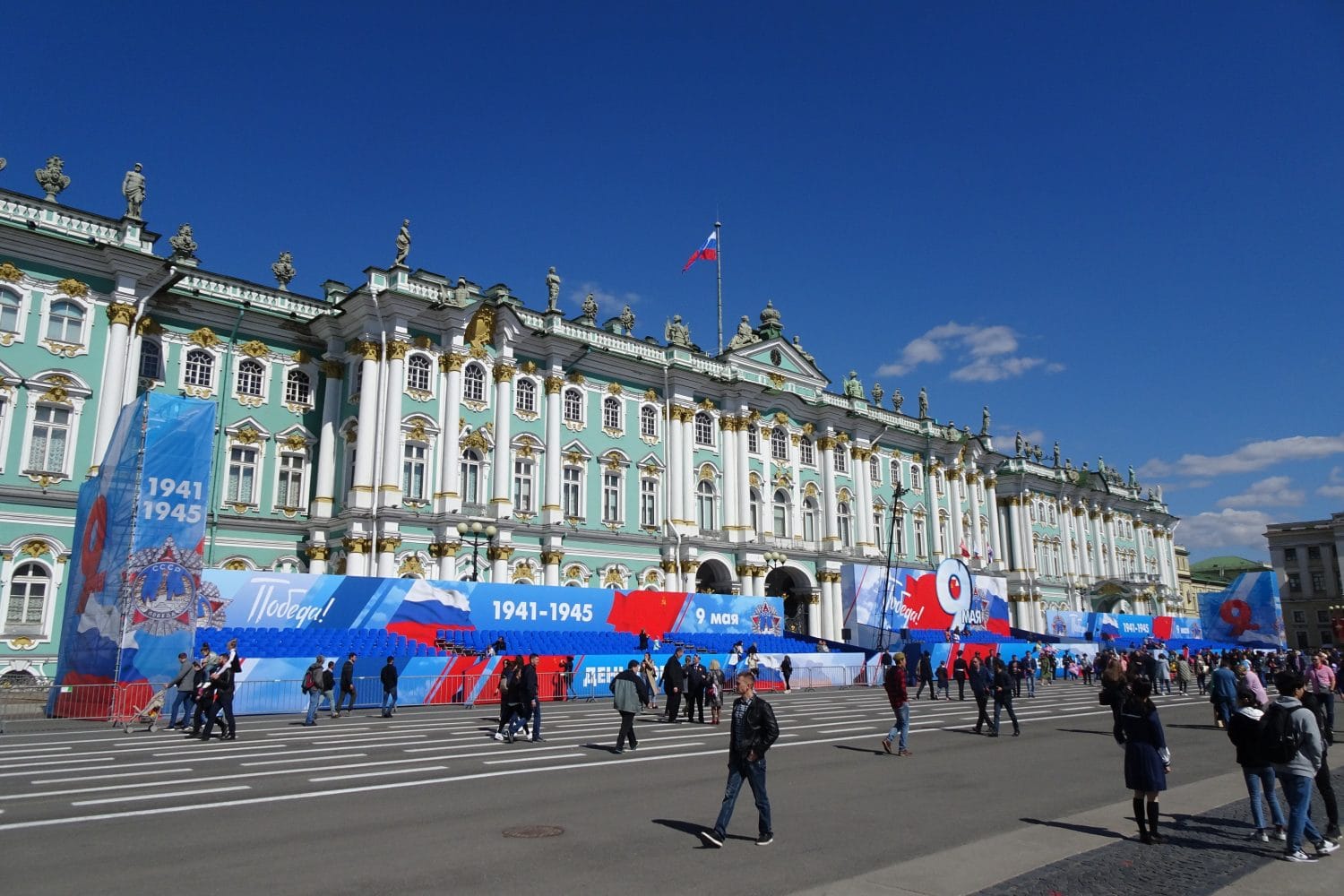
Remembrance of WWII and Russian Identity: Student Observations
World War II holds profound significance in modern Russian culture, transcending mere historical events to become a deeply ingrained element of national identity and collective memory. Known as the Great Patriotic War in Russia, it represents a pivotal period of sacrifice, resilience, and victory against Nazi Germany, shaping the ethos of the nation. Victory Day, […]
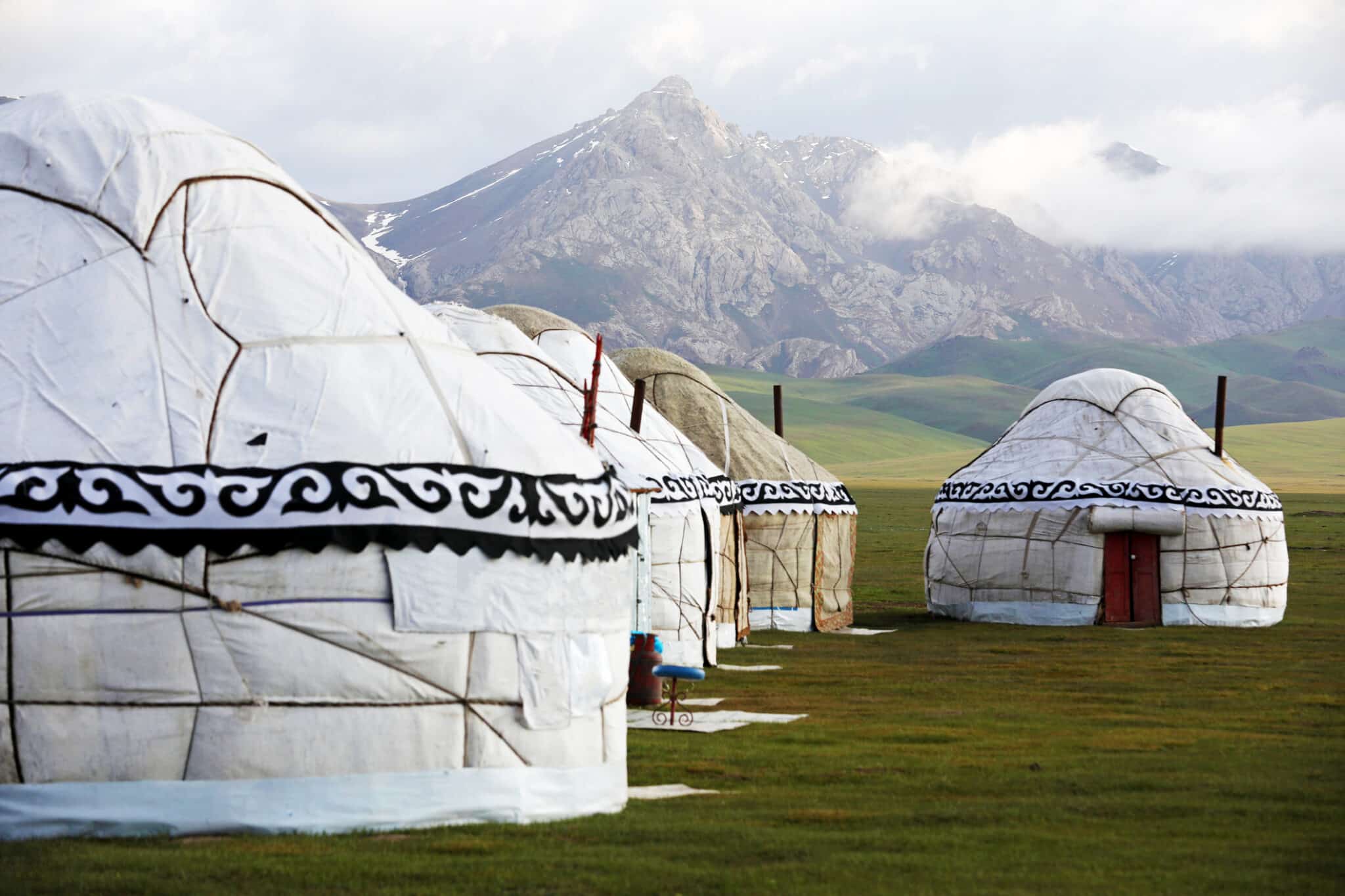
Dwellings in Traditional Funeral and Burial Rituals of the Kyrgyz People (Using Yurts as an Example)
Using historical and ethnographic studies from previous years, literary data, and his own field research conducted over several years’ time in different regions of Kyrgyzstan, the author explores the place and role of dwellings in traditional funeral and burial rituals of the Kyrgyz people. The yurt, a type of dwelling continually used by the formerly […]
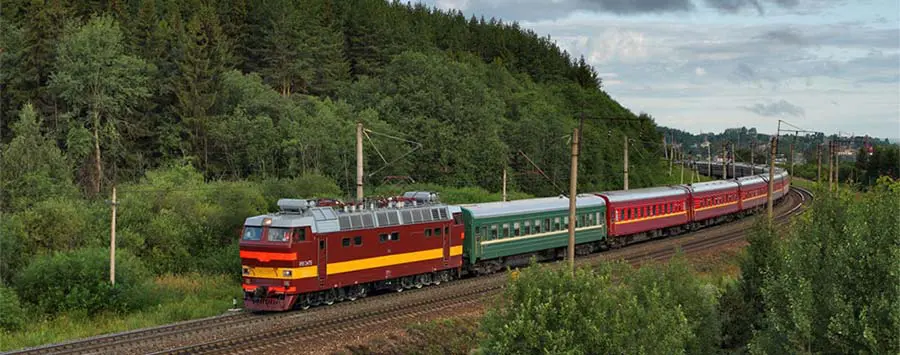
Time Spent on the Trans-Siberian Railway
The Tran-Siberian Railway is the ultimate rail journey: the longest in the world – possibly the coldest if you go at the wrong time of year. A journey of almost mythical proportions that spans two continents while staying in a single country; without leaving your seat you clatter your way along almost a third of […]





